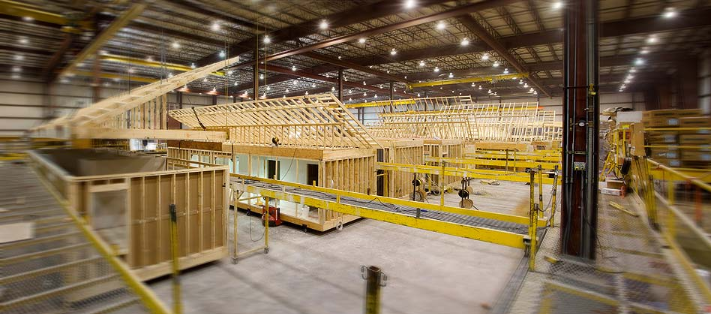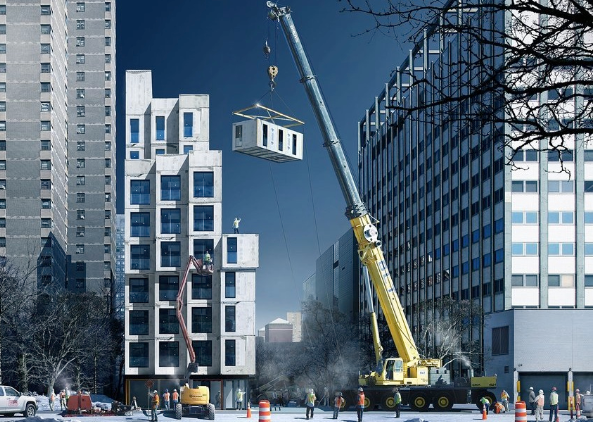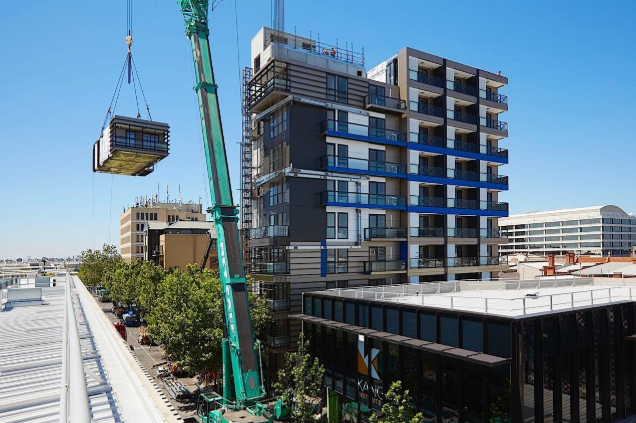Is house-building the most resistant-to-change industry? Here's the argument for offsite construction.
Offsite construction was still the talk of the town at the Resi Conference 2018. I’ve not met any of the talented people from all sectors of the industry that doesn’t agree that there isn’t a better method of building. The housing minister, Kit Malthouse, was emphatic that disruption is possible in house building and that it is not impervious to changes in technology, urging developers not to be the ‘Kodak’ of the house building industry.
However, it currently has to be one of the most backward industries in the world – we’re still building houses the way we built them 150 years ago whilst exposed to the elements using bricks and mortar. Tom Bloxham of Urban Splash likened it to having a new car delivered in bits and dumped in your drive – the gearbox one day, the windscreen the next, then the chassis… then the next week some guys turn up and assemble it in the rain. Can you imagine the variance in quality and snagging issues that would occur if this was how we built cars?
Cars are now all fitted with standard inbuilt computers that can tell us when a light bulb has blown or a tyre is flat. Offsite construction houses will be able to have this level of technology and progress just as every other industry has when we embrace the principles of change in our most basic accommodation needs.
 So why hasn’t offsite construction taken off as predicted?
So why hasn’t offsite construction taken off as predicted?
Predominantly the lack of parity in pricing was the constraint. However, the key driver in this is volume. When constructing traditionally in a boom and bust market you can lay subcontractors off or take more on to accelerate or slow down according to the pipeline; not in a factory production line. The offsite construction requires continuity of pipeline supply and at a volume that will make it cost-effective. Furthermore, changes in specification during construction can be costly on site but are far most costly and disruptive when manufacturing on an assembly line.
Another reason is the lack of manufacturers. When a subcontractor lets us down we can get another – a plasterer or joiner is not indispensable. However, if we sign up to a volumetric off-site construction supply agreement and that supplier lets us down there is no other alternative company manufacturing units that are easily substituted. Having to switch to a new supplier to match the products is fearfully complex, time-consuming and cost-prohibitive. So the solution has to be collaboration between manufacturers that is beginning to happen, to adopt standard metrics and designs that can be adopted by multiple factories to offer more than one supplier for each development. Hereby limiting the risk and providing options to a developer will ensure continuity of supply and minimise risk which will overcome the issues and the manufacturers, in turn, will benefit. By adopting these principles, scaling up and providing the land that is so desperately needed will ensure a faster move towards this urgent change in the market and parity or even a saving in costs.
Funding is a challenge as unlike the traditional model there are upfront costs needed in the manufacturing process; usually a 10% deposit. This is rarely available to be bank funded and activists are pushing for this to change – which it surely will in time when the general principle is adopted nationally. This creates a different risk profile and cash flow curve that will cause issues to funders but are not insurmountable. Unlike the traditional building contracts this should, on the other hand, reduce the risk of overrunning and delays caused when building on a site. Causes are more controllable and the effects are more manageable.
But what are the other advantages? Clearly, the skills shortage in the industry that is becoming more marked each year can be addressed by a paradigm shift in other methods of construction. Whilst we still need tradesmen to build using similar materials in a factory, there is a simplification in skills through routine and production line methodology without the competing frustrations of weather, travel time and reliance on sub-contractors that will remove some of the need for skills. 
It requires a paradigm shift in the workforce too. Self-employed tradesmen need to be prepared to consider the advantages of living close to a factory where they can work in a warm, dry environment with a salary and pension instead of travelling to sites around the country and queuing on the overloaded road network.
Quality is still the number one USP. In measured and controllable conditions, the scrutiny of the whole process is one that can be used to ensure the consistency and quality is maintained. Videos running continuously on the production lines provide accurate and instantly available evidence of the whole process and can be used to deconstruct or amend in the future and provide useful knowledge to continuously improve the processes. The tolerances are tighter, the quality is finer, and given the time and planning, the ability to bespoke can be easier and more cost-effective.
And unlike the myths, it doesn’t hinder creativity, but it channels the ways you can be creative; it doesn’t allow for the type of creativity that you get on site that leads to compromise in quality.
Furthermore, there is no risk of this paradigm shift losing market share to overseas manufacturers. The cost of shipping volumetric offsite constructed units prohibits manufacturing abroad and will do for the foreseeable future. This market will grow the UK economy and use more local labour.
But something more is needed to get momentum to shift the inertia that’s holding up the growth that has come in every other industry that has moved with the times. Government accreditation of the scheme, land allocation, possibly grants or change in planning classes that give impetus to the larger builders to change the mindset and get it moving.
headoffice3 are leaders in office to residential conversion and have completed numerous projects using offsite construction methods for roof extensions. Now looking at some new build opportunities - speak to our team for more details on 0113 257 7777 or email sales@headoffice3.com
